Published on June 16, 2024
When many of us think of high-speed rail (HSR), we have visions of sleek urban progress and green sustainable development because HSR is a fast, efficient and convenient way of travelling between cities.
Politicians and industry groups may also invoke ideas of ‘nation building’ because of HSR’s potential to promote regional economic development beyond our capital cities.
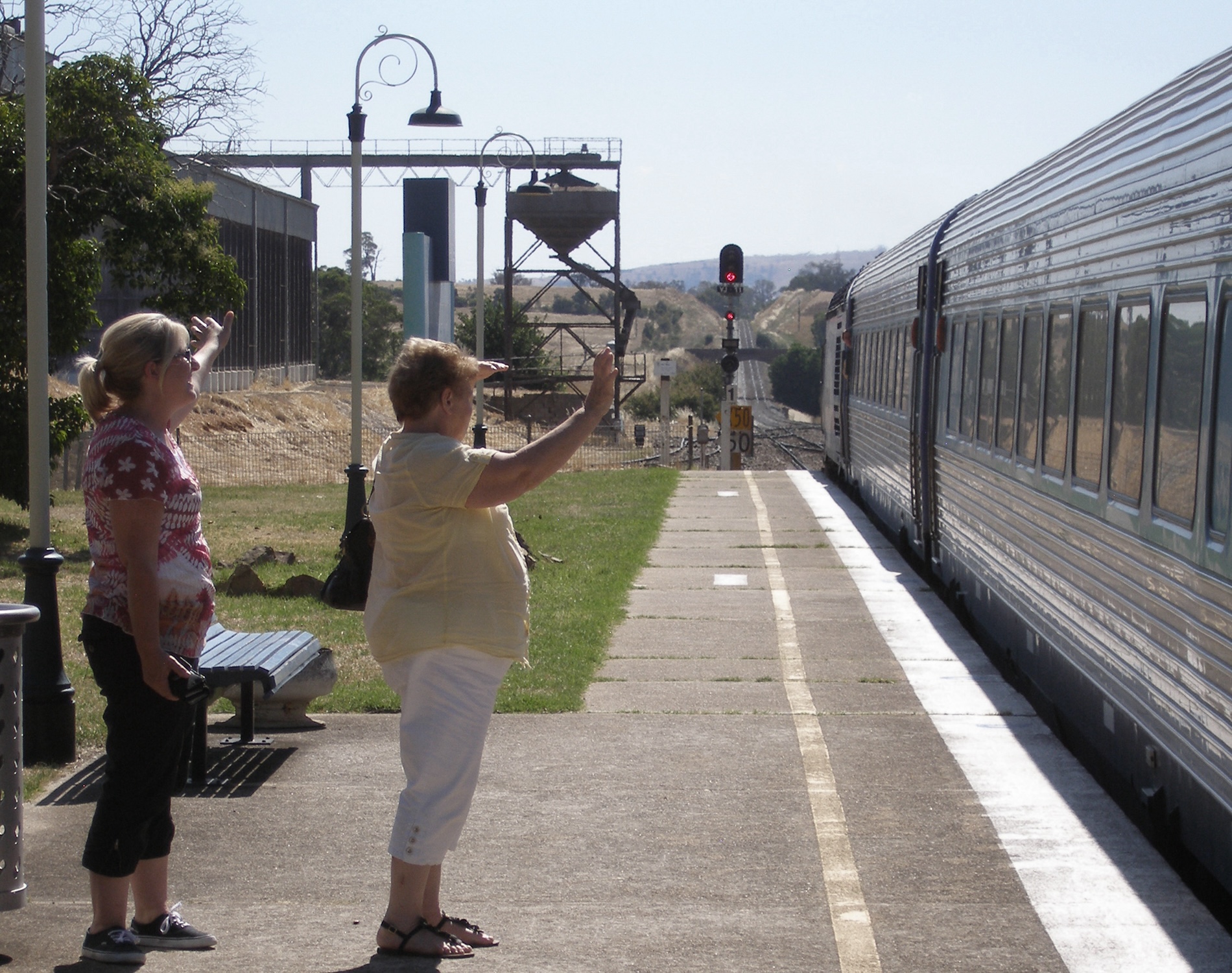
Other countries around the world have proven it can do both things.
Examples from Asia and Europe show us that careful planning of the rail corridor and strong connections to regional cities can deliver real benefits to the community.
But, here in Australia, connected solutions have eluded HSR planners.
After four decades of research and feasibility studies, Australia is yet to develop a plan that effectively integrates regional cities into a HSR network.

Environment
A Big Build or a big bet?
Where we’re at and where we need to be
In 2023, Australia’s Commonwealth government established the High Speed Rail Authority (HSRA) to commence detailed planning work for a corridor connecting Newcastle and Sydney (roughly 120 kilometres apart) in the state of New South Wales.
The government’s long-term plan is to extend the network to connect Australia’s east coast capital cities – Brisbane to Sydney, Canberra and Melbourne.
The most recent government study proposed building ‘regional thru stations’ on greenfield sites (or undeveloped land) that are between 2.5 kilometres and 21.5 kilometres away from the nearest city centre.
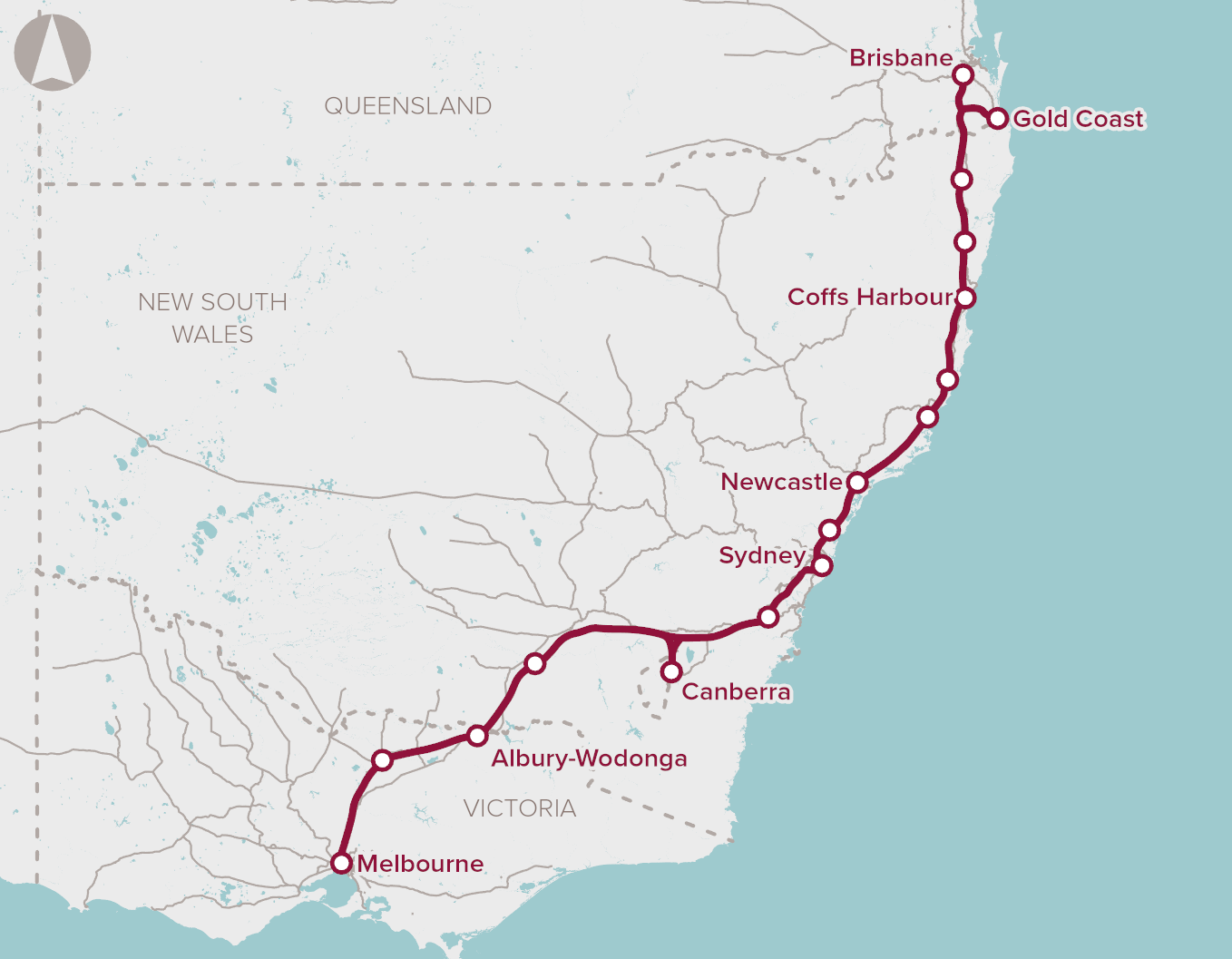
But recent research shows this planning approach won’t help regional communities leverage any of the potentially significant benefits of HSR investment.
Some private interests have seized on various ‘crises’ in our capital cities – traffic congestion, declining housing affordability and loss of amenity as a result of urban densification – to conjure ambitious visions of new cities that are connected by HSR, but disconnected from established regional communities.
Meanwhile, governments see regional cities as gateways to a future HSR network, but building the stations on peripheral sites will mean that people still have to drive to get there, adding to household cost pressures, traffic congestion and greenhouse gas emissions.
None of these outcomes are good for regional communities.

Politics & Society
How Australia’s internal migrants could benefit our regions
An HSR that brings our regions with it
HSR planners have a lot to consider if we want to make sure that Australia’s regions can get on board for the ride.
Carefully planned HSR stations at the centre or edge of regional cities are more sustainable and resilient than those built on greenfield sites. This is because they can make use of existing urban infrastructure including public and active transport networks.
On top of this, station precincts can be more economically resilient because they reinforce existing patterns of urban investment. And then there are the community benefits that stem from the renovation of local amenities including public institutions and open spaces.
But still, public debate about HSR remains hotly contested, with a variety of opinions on its regional impacts, strategic benefits and economic feasibility.
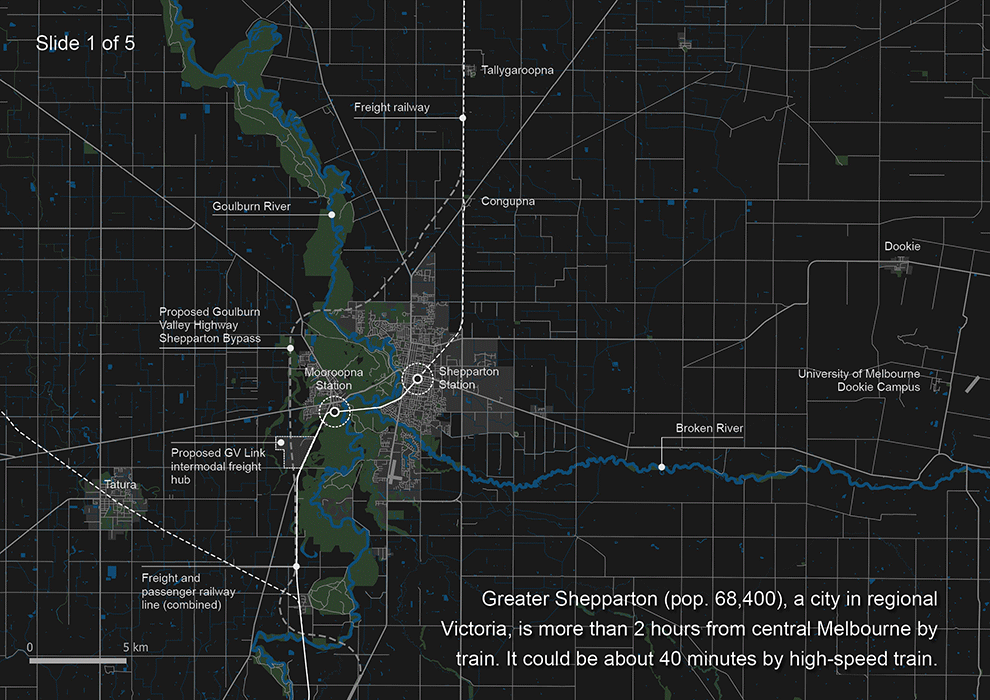
Our team, along with Master of Urban Design students at the Melbourne School of Design (MSD), decided to explore the potential of HSR to regenerate three regional Australian cities: Shepparton and Wodonga in Victoria and Albury in New South Wales.
Using network planning ideas by Fastrack Australia as a reference, we explored the urban design opportunities of upgrades to existing regional rail corridors – which may (or may not) result in trains travelling at 250 kilometres per hour, or faster.
Our approach is broadly consistent with recommendations by Infrastructure Partnerships Australia, CRC for Rail Innovation and the Grattan Institute. We prioritised both upgrades to existing corridors and the construction of new corridors in locations that would allow trains to travel faster.

Politics & Society
The making and unmaking of the East-West Link
Shepparton: Resilient regeneration
In Shepparton, government planners want to build the HSR station on a greenfield site around 10 kilometres from the city centre. Instead, we looked at what it would take to redevelop the existing station in central Shepparton.
The inspiration for this idea came from the historic city of Lleida in Spain. Here, the government built an ‘urban connector’ that takes high speed trains into the centre of the city.
If we use the same strategy for Shepparton, intercity trains could bypass the city at higher speeds while interregional trains could travel into the city centre more slowly.

This strategy may be more costly in the short-term, but the long-term social, economic and environmental benefits to the community could be immense. And there are other advantages, too.
Elevating the railway infrastructure could help Shepparton become a mixed-use, walkable city by improving connectivity for pedestrians and cyclists, while releasing brownfield sites – these are areas previously developed for industrial or commercial purposes – for affordable housing.
It could also help to address urban flooding – a critical issue in Greater Shepparton – by incorporating green infrastructure into the station precinct. These open spaces and ‘green streets’ can mitigate urban flooding and create a ‘new civic heart’ for the Goulburn Valley.

Environment
A bridge too far?
Wodonga: Economic diversification
Albury–Wodonga are two cities that function as one community. Separated by the Murray River and a state border, Albury is in New South Wales and Wodonga is in Victoria.
Government planners want to build the HSR station roughly 20 kilometres away from the centre of Wodonga. In this case, our students explored a Beyond Zero Emissions idea that used the Hume highway and railway corridor to access the city. They came up with a new station type – Shin-Wodonga (Japanese for ‘new’ Wodonga).
Why Japanese? Because the students found inspiration in (and lessons from) examples of urban extensions around HSR stations in Japan.
This plan would see the existing railway station – which is poorly located – moved to La Trobe University and Wodonga TAFE, where connections can be made to learning, research and industry.
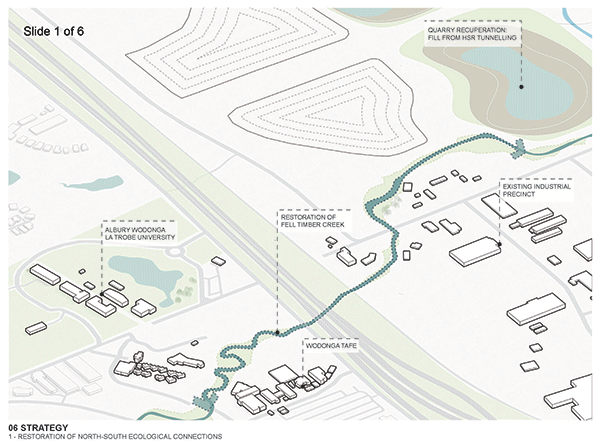
We also challenged conventional approaches to Transit Oriented Development (TOD) – think commercial offices and apartments piled on top of the station – by turning the station into a bridge that connects Wodonga to the Murray River.
High-speed trains would not stop at Shin-Wodonga until demand for intercity services justified a bypass line.
Until then, new investment in Shin-Wodonga would complement the development of established commercial centres and support plans for light-rail or Bus Rapid Transit (BRT) that connects Albury and Wodonga.

Environment
How commuting is transforming our cities
Albury: Governance innovation
If we head over the border to Albury in New South Wales, students identified opportunities for institutional reform that could stem from HSR investment.
In Albury, where the existing historic station is in the geographic centre of Albury-Wodonga, students came up with a plan to make Albury the home of a new authority that plans, delivers and manages regional transport.
Recalling the Albury-Wodonga Development Corporation – an authority responsible for delivering the Whitlam-era Growth Centre Project – the new authority could deliver on Whitlam’s vision by connecting the two cities by a fast, frequent and efficient public transport network.
To transition Albury-Wodonga to a sustainable urban future, the students used the light-rail or BRT network to connect the city to HSR and redevelop underutilised land along the old Hume Highway.
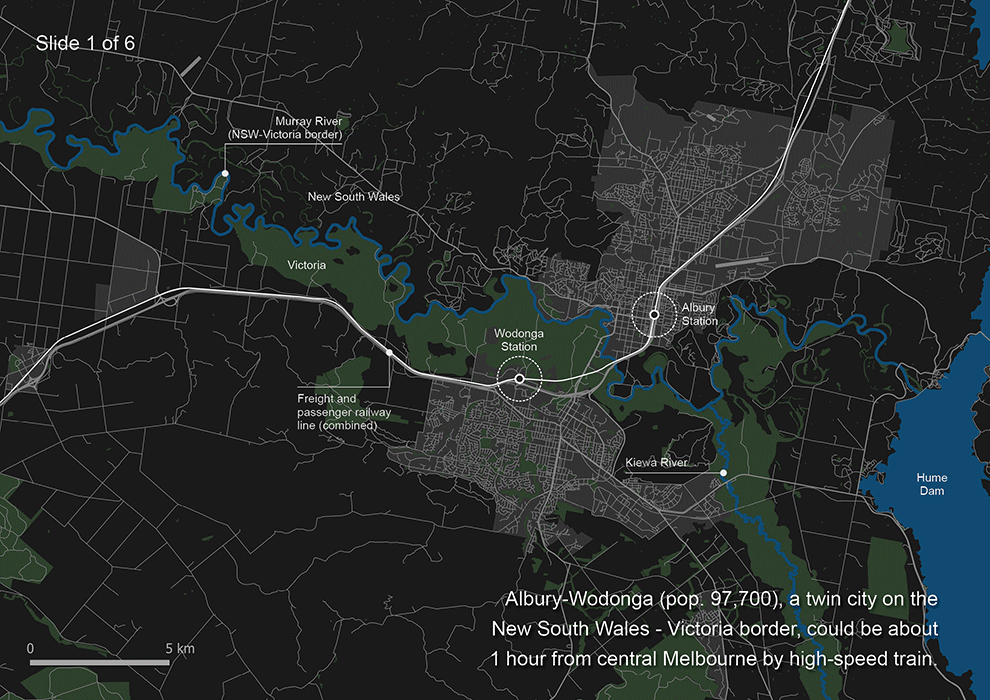
Much more than an engineering project
HSR planners can and should draw lessons from this bold work by the next generation of urban designers. Foremost is that project planning should follow (not precede) a clear vision for the cities and regions that people want to live in – connected, vibrant, sustainable and resilient.
To get us there, HSR planners must adopt a long-term view that prioritises the development needs of regional communities over engineering expediency and the profits of property interests.
The high-speed train doesn’t have to stop at every community between our major cities, but it does need to be connected to those communities by high-quality public transport.
If we are to ‘build a nation’ around HSR, then policymakers and planners must take regional communities along for the ride by making them an integral part of the plan.
This article was first published on Pursuit. Read the original article.